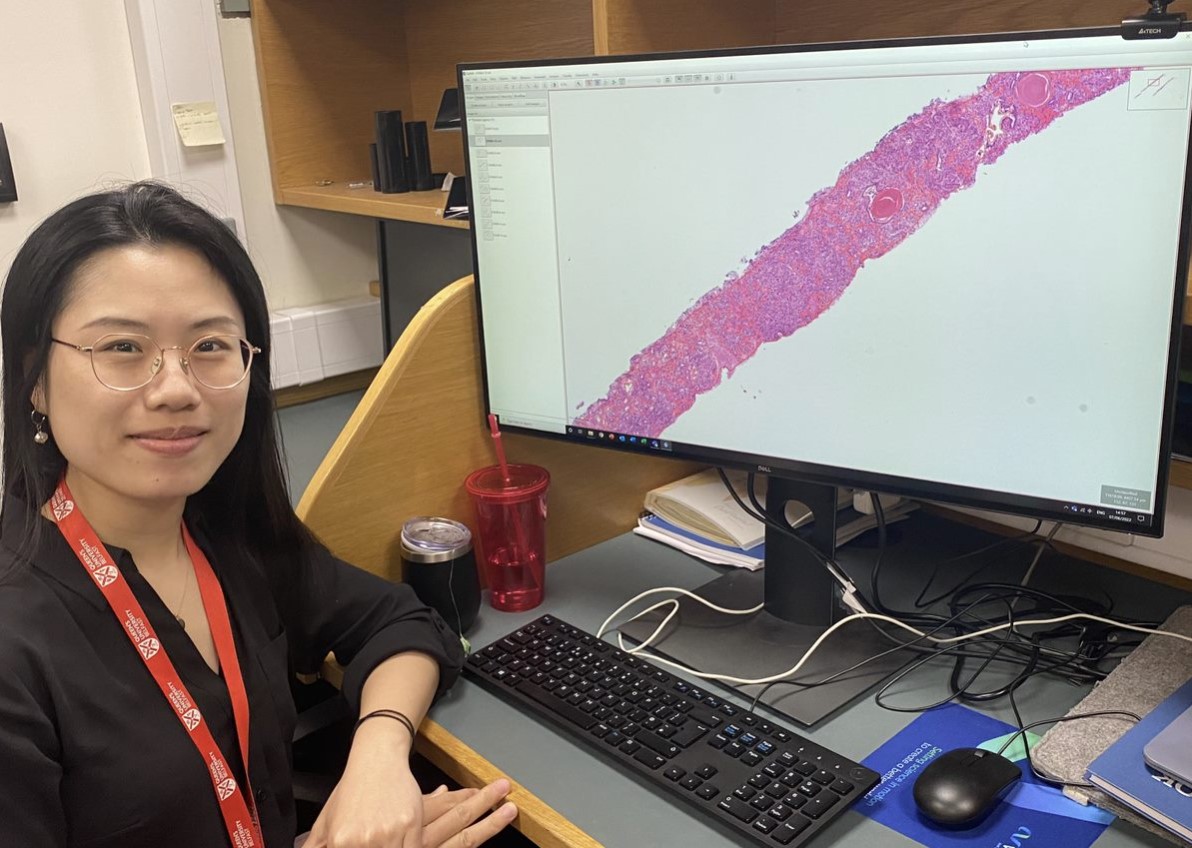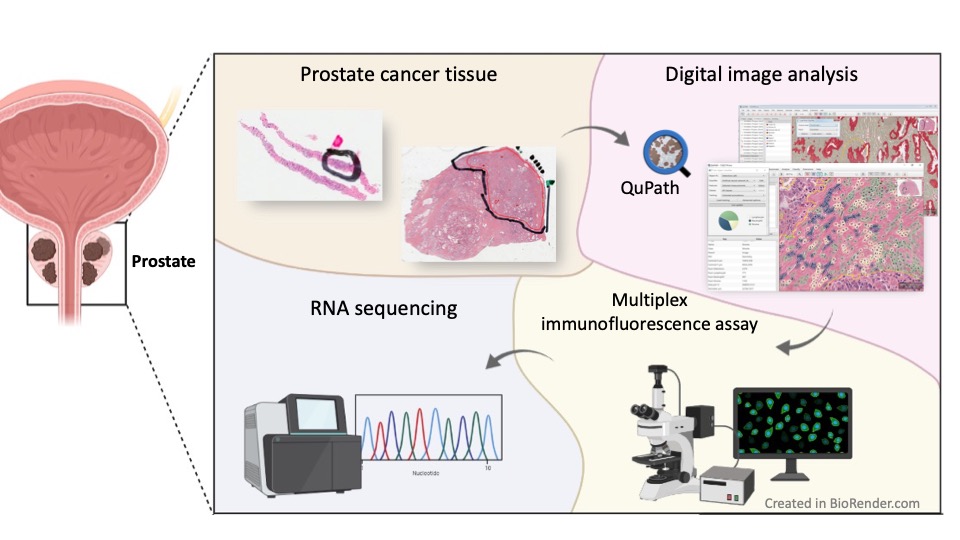Student Corner
I am a PhD student in my second year from China, with a background in Pathology. I work under the supervision of Dr Emma Allott and Dr Melissa LaBonte Wilson. My research aims to identify features of inflammation in the prostate that can be predictive of prostate cancer outcomes.
Prostate cancer is the second most common cancer in men, and accounts for one fifth of male cancer-associated deaths according to Global Cancer Statistics 2020. In NI there are about 1200 cases diagnosed each year and these numbers are projected to continue to increase, making it very important to identify underlying causes or aspects of people’s lifestyle that may affect risk of developing this condition.
Inflammation is the body's response to damage to tissues and cells, and is commonly seen in the prostate; this response typically involves a variety of inflammatory cells such as lymphocytes and neutrophils. Our goal is to better understand the role of inflammation in aggressive and fatal prostate cancer by integrating epidemiologic, clinical and molecular data, and then to use that information in developing ways to better prevent and treat this cancer.

Lanshan Huang
My current research is built on prostate cancer cohorts in United States and Northern Ireland; Epidemiologic data allows for analyses of parameters that affect a particular disease, its distribution and severity or factors that affect incidence and treatment. This kind of information is collected by questionnaires, and in my case, these include current and historical health parameters such as Body Mass Index (BMI), physical activity, alcohol consumption, and drug use - such as nonsteroidal anti-inflammatory drugs (NSAIDs) and statins. These factors are then studied for their correlation to inflammation and their effect on the disease.
Prostate cancer tissues, which are removed for diagnosis prior to treatment, such as prostate biopsy, or surgical treatment, can be scanned, and images are then used for Digital image analysis (see figure below). This approach allows us to quantify immune and inflammatory cells with high accuracy and reveals characteristics such as their spatial distribution within the tumour.
To determine the kinds of lymphocytes present, we can use specific markers for specific individual lymphocyte types, through what is called a multiplex immunofluorescence assay: an image with many colours, each representing a different marker (or protein) typical of a specific cell type or function.
In parallel, we also look at what genes are expressed in these cells, using RNA sequencing; this gives us a molecular cue into specific biological functions and precise features of the cells present in the cancer mass.

The workflow used to characterize features of inflammation in prostate tissue to identify which are predictive of prostate cancer outcomes.
Prostate cancer tissue is retrieved from prostate cancer patients. Inflammation and related pathological features are assessed using QuPath software, for digital image analysis. An immunofluorescence assay will be performed to identify the multiple types of tumours infiltrating lymphocytes simultaneously, and RNA sequencing is used to identify genes expressed in different cells within the tumour. This combination of strategies will allow identifying biological functions and precise features when evaluated using integrative computational methods.
Overall, our results will help enable the development of personalized interventions and treatments to improve prostate cancer outcomes. More broadly, a rich resource for research around early diagnosis and personalized prevention of aggressive and fatal prostate cancer will also be established.
